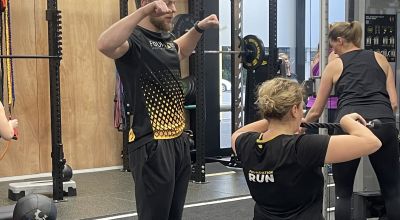Rolling your ankle. Chances are, nearly everyone you meet has rolled their ankle at least once. For many, the injury seems so minor that after a few days of rest they are back into normal activity without any thought. In fact, 50% of people who suffer an ankle sprain will not receive treatment for their injury. But each time you sprain your ankle the ligaments are stretched or torn. Ligaments play a very important role in joint stability and balance. If you continue to suffer ankle sprains and damage the ligaments this can lead to chronic ankle instability.
In 85% of ankle sprains people injure the ligaments on the outside of your ankle. There are three ligaments on the outside of your ankle – anterior talofibular (ATFL), calcaneofibular (CFL) and posterior talofibular (PTFL). The severity of injury can be graded into three levels ranging from a stretch of the ligament through to a rupture. People will present to physio with pain on the outside of the ankle which is often associated with swelling and bruising. Additionally, people find they have reduced range of motion and difficulty walking properly.
Physiotherapy plays a crucial role in restoring function following your injury but also reducing the risk of developing chronic ankle instability. Initially, we help to reduce your pain and swelling, get the range of motion in your ankle back and improve your walking ability. As you progress your rehabilitation the focus turns to restoring strength, balance and control with running, jumping and landing based exercises. Returning to sport and activity can be daunting but your physio will be able to guide you through this ensuring you are returning in a safe and controlled manner.
For more information contact [email protected]
Related posts

If you want faster recovery and long-term results, your rehab needs to look like the life you want to get back to.

Research shows that switching sports in the off-season is one of the best ways for 12–18-year-olds to boost performance, stay healthy, and keep sport fun

Here are a handful of reasons why integrating strength training into your running routine is a good idea







